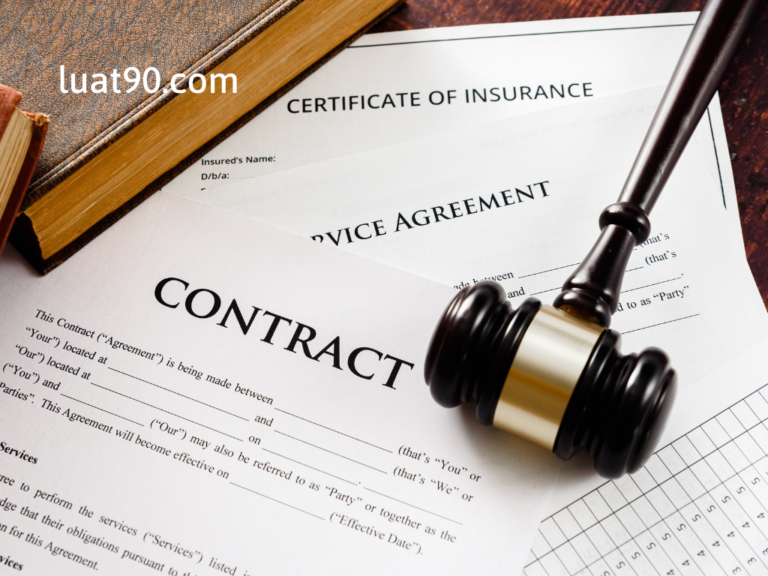Hotline:
Transfer of industrial property rights in Vietnam. Among the objects of intellectual property rights, industrial property rights keep a particularly important role in production and business activities. With the commercial benefits that industrial property rights bring to owners, the need to exploit, use, assign and license objects of industrial property rights is also increasingly common. The transfer value is getting bigger and bigger.

Objects of intellectual property rights
1. Invention: means a technical solution in the form of a product or a process which is intended to solve a problem by application of laws of nature.
2. Industrial design: means a specific appearance of a product embodied by three-dimensional configurations, lines, colors, or a combination of these elements.
3. Layout-design of semiconductor integrated circuit: means a three-dimensional disposition of circuit elements and their interconnections in a semiconductor integrated circuit. Semiconductor integrated circuit means a product, in its final form or an intermediate form, in which the elements, at least one of which is an active element, and some or all of the interconnections, are integrally formed in or on a piece of semiconductor material and which is intended to perform an electronic function. Integrated circuit is synonymous to IC, chip and microelectronic circuit.
4. Trade secret: means information obtained from financial or intellectual investment activities, which has not yet been disclosed and can be used in business.
5. Trademark: means any sign used to distinguish goods or services of different organizations or individuals.
6. Trade name: means a designation of an organization or individual in business activities, capable of distinguishing the business entity bearing it from another entity in the same business domain and area. A business area mentioned in this Clause means a geographical area where a business entity has its partners, customers or earns its reputation.
7. Geographical indication: means a sign which identifies a product as originating from a specific region, locality, territory or country.
8. The right to prevent unfair competition: means the right shall be established on the basis of competitive activities in business.
Limitations on industrial property rights
Industrial property rights may be limited pursuant by the following factors:
1. Right of prior users to inventions or industrial designs
In case a person has. before the filing date or priority date (if any) of an invention or industrial design registration application, used or prepared necessary conditions for using an invention or industrial design identical with the protected invention or industrial design stated in that registration application but created independently (below referred to as prior use right holder), then after a protection title is granted, he/she may continue using such invention or industrial design within the scope and volume of use or use preparations without having to obtain permission of or paying compensations to the owner of the protected invention or industrial design. The exercise of the right of prior users of inventions or industrial designs is not regarded as an infringement upon the right of invention or industrial design owners.
Holders of prior use right to inventions or industrial designs may not assign such right to others, unless that right is assigned together with the transfer of business or production establishments which have used or are prepared to use the inventions or industrial designs. Prior use right holders may not expand the use scope and volume unless it is so permitted by invention or industrial design owners.
2. Obligation to pay remuneration to authors of inventions, industrial designs and layout designs
Owners of inventions, industrial designs and layout designs shall be obliged to pay remuneration to the authors of such inventions, industrial designs and layout designs, unless otherwise agreed upon by the parties.
The minimum level of remuneration payable by an owner to an author shall be regulated as follows:
– Ten (10) per cent of the profit gained by the owner from the use of the invention, industrial design or layout design;
– Fifteen (15) per cent of the total amount received by the owner in each payment for licensing of the invention, industrial design or layout design.
Where an invention, industrial design or layout design is jointly created by more than one author, the remuneration level shall be applicable to all co-authors. The co- authors shall agree between themselves on the division of the remuneration paid by the owner.
The obligation to pay remuneration to authors of inventions, industrial designs and layout designs shall exist throughout the term of protection of such invention, industrial design or layout design.
3. Obligation to use inventions and marks
Owners of inventions shall be obliged to manufacture protected products or apply protected processes to satisfy the requirements of national defence and security, disease prevention, and treatment and nutrition of the people or to meet other social urgent needs. When above needs arise but an invention owner fails to perform such obligation, the competent State body may license such invention to others without permission from the invention owner.
Owners of marks shall be obliged to use such marks continuously. Where a mark has not been used for five consecutive years or more, another entity has the right to file a request for termination of the validity of that certificate of trademark registration.
4. Obligation to authorize the use of principal inventions for the purpose of using dependent inventions
A dependent invention means an invention created based on another invention (hereinafter referred to as the principal invention) and may only be used on condition that the principal invention is also used.
Where the owner of a dependent invention can prove that his or her invention makes an important technical advance as compared with the principal invention and has great economic significance, he or she may request the owner of the principal invention to license such principal invention at a reasonably commercial price and conditions.
Where the owner of a principal invention fails to satisfy the request of the owner of a dependent invention without justifiable reason, the State body concerned may license such invention to the owner of the dependent invention without permission from the owner of the principal invention.
5. Licensing of invention under a decision of a competent state agency
An invention owner must license an invention to another subject under a decision of the State in the following cases:
– The use of the invention for public purposes, serving national defense and security, disease prevention, treatment, nutrition or sastifying urgent needs of society.
– The owner does not use the invention after 04 years from the date of filing the registration application and after 03 years from the date of being granted the invention patent.
– The owner performs anti-competitive behavior prohibited by Vietnamese law.
Assignment of industrial property rights

Assignment of an industrial property right means the transfer of ownership right by the owner of such industrial property right to another organization or individual.
Restrictions on assignment of industrial property rights
– Industrial property right owners may only assign their rights within the scope of protection.
– Rights to geographical indications shall not be assignable.
– Rights to trade names may only be assigned together with the transfer of the entire business establishment and business activities under such trade name.
– The assignment of the rights to marks must not cause confusion as to properties or origins of goods or services bearing such marks.
– Rights to marks may only be assigned to organizations or individuals who satisfy conditions for persons having the right to register such marks.
Contents of industrial property right assignment contracts
An assignment of an industrial property right must be established in the form of a written contract and must contain the following principal contents:
– Full names and addresses of the assignor and of the assignee.
– Grounds for the assignment.
– Assignment price.
– Rights and obligations of the assignor and the assignee.
Dossier for registration of assignment contract
– Application for registration
– Assignment contract.
– Original title of protection.
– The written consent of the co-owners on the assignment (if the industrial property rights are under common ownership).
– Regulations on using collective marks, Regulations on using certification marks (if the trademark is a collective mark, certification mark).
– Documents proving the assignee’s right to file an application (if the trademark is a collective mark or a certification mark).
– Power of attorney.
– Copy of fee payment document.
Licensing of industrial property rights
Licensing of an industrial property object means permission by the owner of such industrial property object for another organization or individual to use the industrial property object within the scope of the owner’s right.
Restrictions on licensing of industrial property objects
– The right to use geographical indications or trade names shall not be licensable.
– The right to use collective marks must not be licensed to organizations or individuals other than members of the owners of such collective marks.
– The licensee must not enter into a sub-licence contract with a third party, unless it is so permitted by the licensor.
– Mark licensees shall be obliged to indicate on goods and goods packages that such goods have been manufactured under mark licence contracts.
– Invention licensees under exclusive contracts shall be obliged to use such inventions in the same manner as the invention owners.
Types of industrial property object licence contracts
Industrial property object licence contracts shall be of the following types:
– Exclusive contract means a contract under which, within the licensing scope and term, the licensee shall have the exclusive right to use the licensed industrial property object while the licensor may neither enter into any industrial property object licence contract with any third party nor, without permission from the licensee, use such industrial property object.
– Non-exclusive contract means a contract under which, within the licensing scope and term, the licensor shall still have the right to use the industrial property object and to enter into a non-exclusive industrial property object licence contract with others.
– Industrial property object sub-licence contract means a contract under which the licensor is a licensee of the right to use such industrial property object pursuant to another contract.
Contents of industrial property object licence contracts
Licensing of industrial property objects must be established in the form of a written contract and must contain the following principal contents:
– Full names and addresses of the licensor and of the licensee;
– Grounds for licensing;
– Contract type;
– Licensing scope including limitations on use right and territorial limitations;
– Contract term;
– Licensing price;
– Rights and obligations of the licensor and of the licensee.
According to the CPTPP Agreement, the contract to license an industrial property object is valid according to the agreement between the parties and is legally valid for a third party regardless of its registration at the Intellectual Property Office of Vietnam.
An industrial property object licence contract must not have provisions which unreasonably restrict the right of the licensee, and in particular the following provisions which do not derive from the rights of the licensor:
– Prohibiting the licensee from improving the industrial property object other than marks; compelling the licensee to transfer free of charge to the licensor improvements of the industrial property object made by the licensee or the right of industrial property registration or industrial property rights to such improvements;
– Directly or indirectly restricting the licensee from exporting goods produced or services provided under the industrial property object licence contract to the territories where the licensor neither holds the respective industrial property right nor has the exclusive right to import such goods;
– Compelling the licensee to buy all or a certain percentage of raw materials, components or equipment from the licensor or a third party designated by the licensor not for the purpose of ensuring the quality of goods produced or services provided by the licensee;
– Prohibiting the licensee from complaining about or initiating lawsuits with regard to the validity of the industrial property rights or the licensor’s right to license.
Any clauses in a contract falling into above cases shall be automatically invalid.
Dossier for registration of licensing contract
– Application for registration
– Licensing contract.
– The written consent of the co-owners on the licensing (if the industrial property rights are under common ownership).
– Power of attorney.
– Copy of fee payment document.
Bạn cần tư vấn? Đừng ngần ngại liên hệ ngay với chúng tôi để được hỗ trợ.




